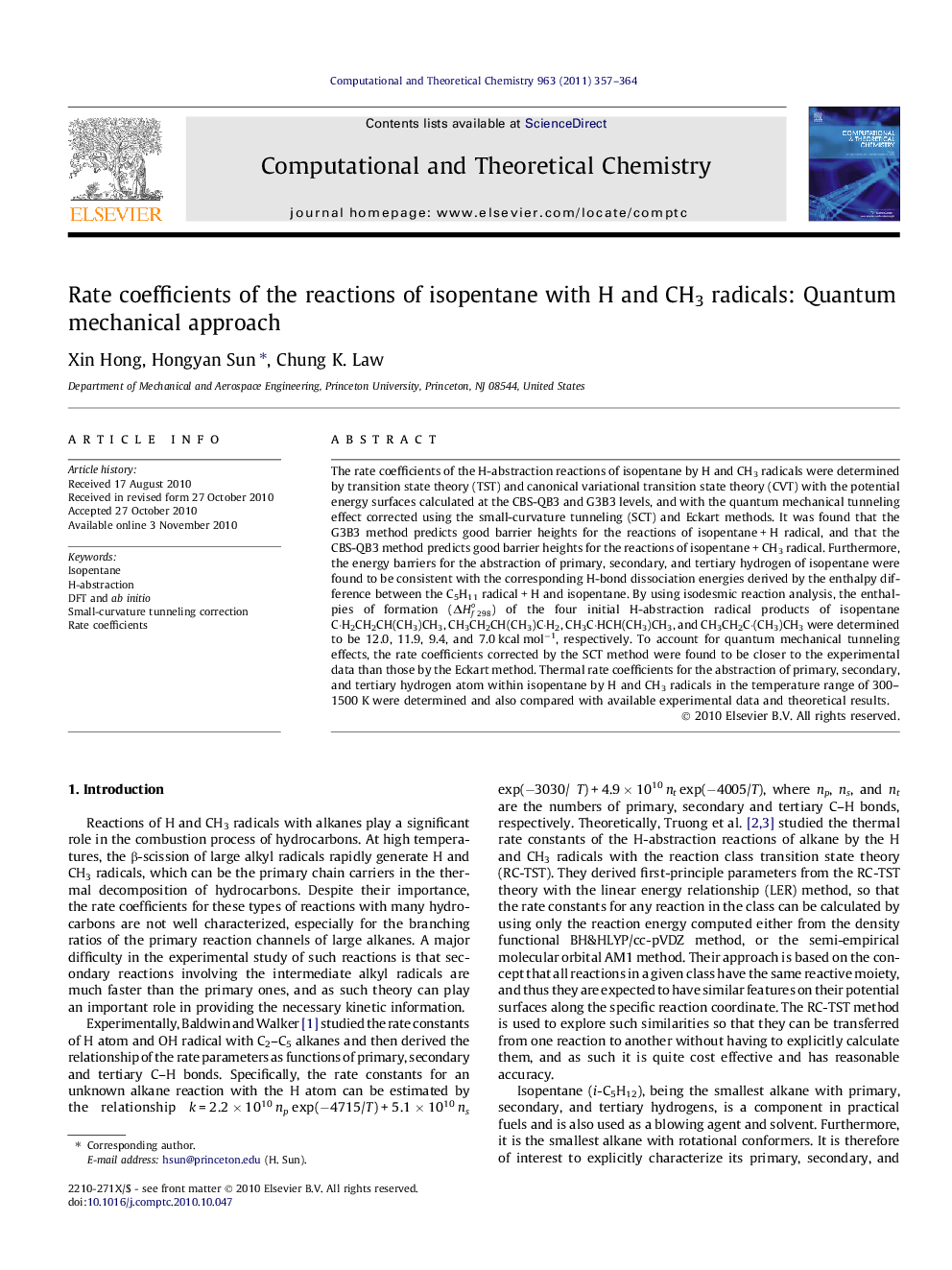| Article ID | Journal | Published Year | Pages | File Type |
|---|---|---|---|---|
| 5395386 | Computational and Theoretical Chemistry | 2011 | 8 Pages |
Abstract
The rate coefficients of the H-abstraction reactions of isopentane by H and CH3 radicals were determined by transition state theory (TST) and canonical variational transition state theory (CVT) with the potential energy surfaces calculated at the CBS-QB3 and G3B3 levels, and with the quantum mechanical tunneling effect corrected using the small-curvature tunneling (SCT) and Eckart methods. It was found that the G3B3 method predicts good barrier heights for the reactions of isopentane + H radical, and that the CBS-QB3 method predicts good barrier heights for the reactions of isopentane + CH3 radical. Furthermore, the energy barriers for the abstraction of primary, secondary, and tertiary hydrogen of isopentane were found to be consistent with the corresponding H-bond dissociation energies derived by the enthalpy difference between the C5H11 radical + H and isopentane. By using isodesmic reaction analysis, the enthalpies of formation (ÎHf298o) of the four initial H-abstraction radical products of isopentane C·H2CH2CH(CH3)CH3, CH3CH2CH(CH3)C·H2, CH3C·HCH(CH3)CH3, and CH3CH2C·(CH3)CH3 were determined to be 12.0, 11.9, 9.4, and 7.0 kcal molâ1, respectively. To account for quantum mechanical tunneling effects, the rate coefficients corrected by the SCT method were found to be closer to the experimental data than those by the Eckart method. Thermal rate coefficients for the abstraction of primary, secondary, and tertiary hydrogen atom within isopentane by H and CH3 radicals in the temperature range of 300-1500 K were determined and also compared with available experimental data and theoretical results.
Related Topics
Physical Sciences and Engineering
Chemistry
Physical and Theoretical Chemistry
Authors
Xin Hong, Hongyan Sun, Chung K. Law,
